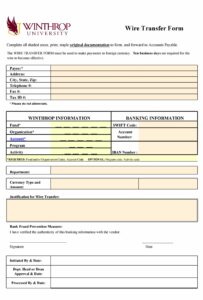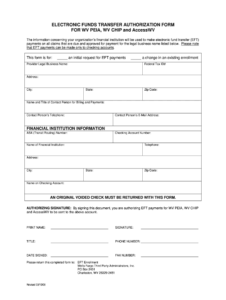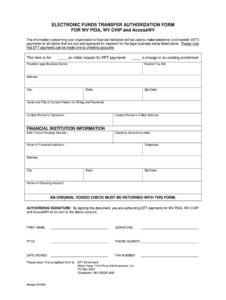Standardized forms offer several advantages. They minimize the risk of inaccuracies, which can lead to costly delays or failed transactions. Streamlined data collection enhances operational efficiency for both the sender and the receiving institution. A clear and consistent format ensures all necessary information is readily available, simplifying audits and record-keeping. Moreover, such a structured approach improves security by reducing the potential for fraud and unauthorized transfers.
This article will further explore the key components of these forms, best practices for their use, and considerations for businesses and individuals who frequently conduct electronic funds transfers. Specific examples and practical guidance will be provided to ensure secure and efficient financial transactions.
Key Components of a Wire Transfer Request Form
Accurate and efficient processing of electronic funds transfers requires specific information. A standardized form ensures consistent data collection, minimizing errors and processing delays. The following components are typically essential:
1: Sender Information: Complete legal name, address, phone number, and account details of the originating party are required for verification and record-keeping.
2: Recipient Information: Accurate recipient details are crucial. This includes the recipient’s full legal name, address, phone number, bank name, account number, and, if applicable, the SWIFT code or other identifying bank codes.
3: Transfer Amount: The precise amount to be transferred must be clearly stated in the designated currency.
4: Transfer Date: Specifying the desired execution date for the transfer ensures timely processing.
5: Payment Instructions: This section details any specific instructions regarding the transfer, such as associated fees or intermediary banks.
6: Authorization: Signature(s) of authorized personnel are required to validate the transfer request and ensure compliance with internal control procedures.
7: Supporting Documentation (if applicable): Depending on the nature of the transfer, supporting documentation, such as invoices or contracts, might be necessary.
Complete and accurate information in these fields ensures seamless processing of the transfer, minimizes potential errors, and provides a clear audit trail for all parties involved. Standardized forms facilitate regulatory compliance and improve financial operational efficiency.
How to Create a Wire Transfer Request Template
Creating a standardized form for wire transfer requests promotes accuracy, efficiency, and security in financial transactions. A well-designed template ensures consistent data collection and reduces the risk of errors. The following steps outline the process of creating such a template.
1: Header: Clearly label the document as a “Wire Transfer Request Form” at the top. Include a unique identifying number for tracking and record-keeping purposes. Adding the date of creation or revision can also be beneficial for version control.
2: Sender Information Section: Designate fields for the sender’s legal name, full address, phone number, email address, and complete bank account details, including the account number, bank name, branch address, and routing number.
3: Recipient Information Section: Create fields for the recipient’s legal name, full address, phone number, email address, bank name, account number, SWIFT code (or equivalent international identifier), and bank address. Ensure clear labeling for each field to prevent confusion.
4: Transfer Details Section: Include designated spaces for the transfer amount (clearly specifying the currency), the desired execution date of the transfer, and any specific payment instructions. This section should also include a field for the purpose of the transfer.
5: Authorization Section: Incorporate space for signatures of authorized personnel and potentially a section for printed names and titles to ensure clear accountability and adherence to internal control procedures.
6: Supporting Documentation Section: If relevant, create a section for attaching supporting documentation, such as invoices, contracts, or other relevant paperwork. Clearly label this section and specify the types of documents that might be required.
7: Review and Refinement: After the initial design, thoroughly review the template for clarity, completeness, and ease of use. Test its practicality by using it for a few sample transfers to identify any potential areas for improvement.
8: Implementation and Training: Once finalized, implement the template within the organization and provide necessary training to personnel involved in initiating or processing wire transfers. Regular review and updates ensure its continued effectiveness and compliance with evolving industry best practices.
A well-structured form with clear instructions and designated fields for all necessary information ensures efficient and secure processing, minimizes errors, facilitates reconciliation, and promotes sound financial management practices.
Standardized wire transfer request forms provide a crucial framework for secure and efficient financial transactions. Utilizing a template ensures consistent data collection, minimizing errors and processing delays, while also facilitating compliance and audit trails. The key components, including accurate sender and recipient information, precise transfer details, and proper authorization, contribute to the overall integrity of the process. Implementing well-designed templates and adhering to best practices strengthens financial controls and reduces the risks associated with electronic funds transfers.
Effective management of electronic funds transfers requires a proactive approach to risk mitigation and operational efficiency. Adopting standardized processes, such as using well-designed templates, represents a significant step towards achieving these objectives. Regular review and refinement of these procedures, in line with evolving industry best practices and regulatory requirements, will further enhance the security and efficiency of financial operations.


